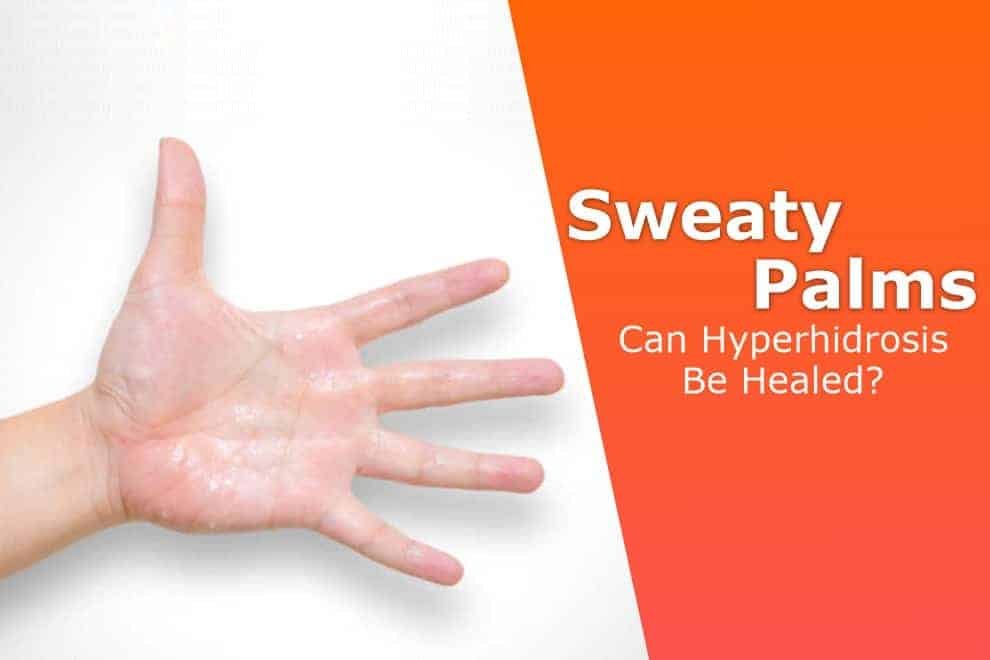Almost everybody will get sweaty palms at some point. Whether they are nervous about meeting someone for the first time, are giving a presentation in front of strangers, or really just any anxiety-inducing situation, sweaty palms are natural.
Then, there are those that experience sweaty palms simply from sitting down in a calm environment, even if the temperature is comfortable or cool.
If you’ve gone through that exact experience, you may have hyperhidrosis, a condition that causes your body to sweat more than what would be considered standard.
Hyperhidrosis isn’t a life-threatening condition as long as you stay properly hydrated, but it can cause a lot of uncomfortable situations. There are certain parts of the body that are more prone to hyperhidrosis, with the hands being the most common.
Isolated Hyperhidrosis
Some people with hyperhidrosis may experience this condition in all of their sweat glands throughout the body, but there are many that have just one body part with hyperhidrosis.
Focal hyperhidrosis when it occurs in the hands or feet is known as palmoplantar hyperhidrosis. When hyperhidrosis is isolated like this, there may be some underlying issues that are causing it to happen, albeit rare.
This is especially true in the case of sweaty palms, as studies have yet to find a link between it and any related serious condition.
If you feel like you’re alone in the world with palmar hyperhidrosis, you’re not. Those that do have the condition are likely to get it from a family member, as 40 percent of patients are related to someone else with hyperhidrosis.
Overall, palmar hyperhidrosis affects 3 percent of the global population. Asians are the most susceptible to palmar hyperhidrosis, with 6 percent being diagnosed with the condition.
Treatment Options
Now the big question: “Is there a cure for palmar hyperhidrosis?” Unfortunately, the answer is no. However, there are several treatment options that range greatly in difficulty and price, so let’s break down a few and see which ones may work for you.
Antiperspirant
While obviously, many of us think about using antiperspirants for our underarms, they can actually be great for your hands. Simply apply antiperspirant on your skin the same way as you would your underarms, and you’ll notice an immediate improvement, especially if you’re using stronger brands like Gold Bond.
You can even use any scent you want as long as you’re comfortable with it, and it’s a low-cost treatment that you would’ve purchased at the store for other uses anyway.
If you’re more comfortable with an antiperspirant for your hands in the form of cloth instead of a stick, try using medicated wipes such as Qbrexza to do the trick.
Medication
If antiperspirant sticks and wipes aren’t working, the next course of action may be to speak with your doctor about possible prescriptions, many of which may be covered by your insurance.
Some of the more common medications for hyperhidrosis include Benztropine, Oxybutynin, and Glycopyrrolate. These medications have a proven track record of helping people with hyperhidrosis, and side effects are often minimal.
Iontophoresis
Developed in the 1940s, iontophoresis is a treatment solely for the purpose of helping those with palmoplantar hyperhidrosis. Similar to a foot bath or hand bath, this treatment has you placing both of your hands in small tubs of tap water for upwards of 40 minutes while small electrical charges surge in the water.
Upon your first round of treatments with iontophoresis, you’ll undergo this procedure multiple times per week and you’re able to purchase the treatment system for yourself so that you don’t have to come to the doctors office.
After that first week, you’ll continue the process once per week until you experience dryer palms. While more studies need to be done to show the effectiveness, anecdotal evidence is cause for optimism.
Surgical Procedures
When all else fails, people who suffer from hyperhidrosis have often turned to minor surgical procedures to alleviate symptoms or get rid of them altogether. The first of these is Botox.
More associated with plastic surgery and facial injections, Botox has shown to be upwards of 90 percent effective in reducing symptoms with repeat injections needed.
The other primary procedure is endoscopic thoracic sympathectomy, or ETS, for short. This is typically reserved for more severe cases of hyperhidrosis as it’s more invasive than other treatments. The surgery requires a patient to go under general anesthesia and can take upwards of three hours.
These are the main options for those that deal with palmar hyperhidrosis. Trying out antiperspirants is the best way to start, and explore your options from there.
ALSO READ: 5 Symptoms of Iron Deficiency in Children (And What To Do About It)










